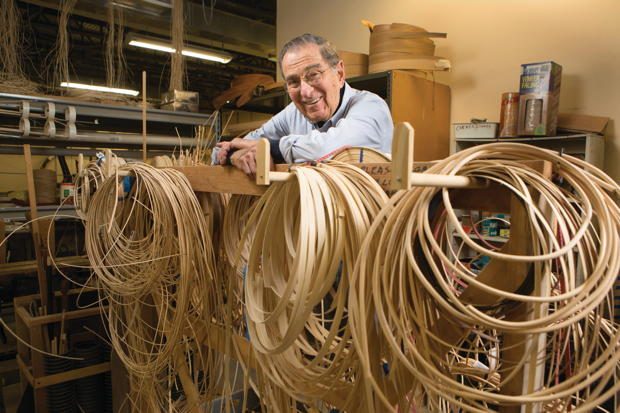
“Don’t make fun of our coffee,” quips a sign above the coffee maker. “You may be old and weak yourself some day.” For the retirees working in the cavernous basement of this former automobile dealership on Broad Street in Summit, that day is clearly not today. They are learning new skills, repairing furniture and at the same time socializing with contemporaries. The tools of the trade line the shop’s walls, and forlorn-looking chairs await attention amid the rows of workbenches.
The busy shop’s earnings help support Sage Eldercare, the affiliated nonprofit located upstairs. Sage Eldercare has been serving northern New Jersey’s elderly for six decades. In 1966 it started one of the state’s first Meals on Wheels programs; it’s still going strong. Today, Sage volunteers and staff help more than 7,000 aging individuals maintain independence by assisting with chores like shopping for groceries and navigating Medicare.
In the shop, the roughly 20 volunteers come from different backgrounds with various levels of experience. They quickly begin to enjoy the step-by-step process of refurbishing old pieces. Some customers make curious requests—restore a 3-foot-tall, faded, chipped, wooden tiger sculpture; build a bed frame from a broken dining-room table. The shop attracts an ample supply of donated, mismatched furniture parts for the volunteers to reuse creatively. There’s sanding and staining to be done, but much of the work involves re-rushing or re-caning worn seats.
Rushing, traditionally performed with reed grass, is now mostly done with rolled paper (the fiber is gentler on workers’ hands). The finished seat looks like a square divided diagonally into four tightly woven triangles. Caning, another fiber-weaving process, uses thin strands of bamboo that are carefully sewn to form small interlocking octagons in a seven-step process.
“It’s not very difficult, just tedious,” says Eck Goh, 63, a volunteer from New Providence. Goh works with Edward Fernandez, 87, a Romance-languages professor retired from Fairleigh Dickinson University in Madison. “He has the patience of a saint,” Goh says. Fernandez tends to handle the difficult caning work.
The weaving motions of caning make ideal therapy for aging or idle hands. Esther Bondy, 47, was forced to retire after suffering a stroke four years ago. She repairs furniture as a form of physical therapy. Bondy has taught herself to use her right hand despite losing feeling on that side of her body.
Marsha Foregger, another of the five women currently working at the shop, is a former ESL teacher. “Only the women are willing to tackle these chairs,” Foregger says, indicating a set of antique seats with a Danish weave. She’s been with the shop for more than six years and loves the challenge of restoration work. “I can imagine pioneers doing this type of weaving.”
Some volunteers bring specialized skills. Bob McAnally, 73 (who goes by Bob 2; there are three Bobs), worked at Bell Labs and Lucent Technologies making intricate hardware for early computer systems. While the shop requires volunteers to put in just two days of work a week, McAnally arrives every day at 7:30 am.
“I depend on him for a great deal,” says manager Al Kessler of McAnally, a longtime colleague and friend. Kessler, 87, a retired dentist from Millburn, became shop manager in 2005 when Sage moved into the former Oldsmobile dealership. He’s been at Sage for 16 years; McAnally for 13. “[McAnally’s] hands probably touch about a third of all the furniture we repair. He is a lunatic.”
